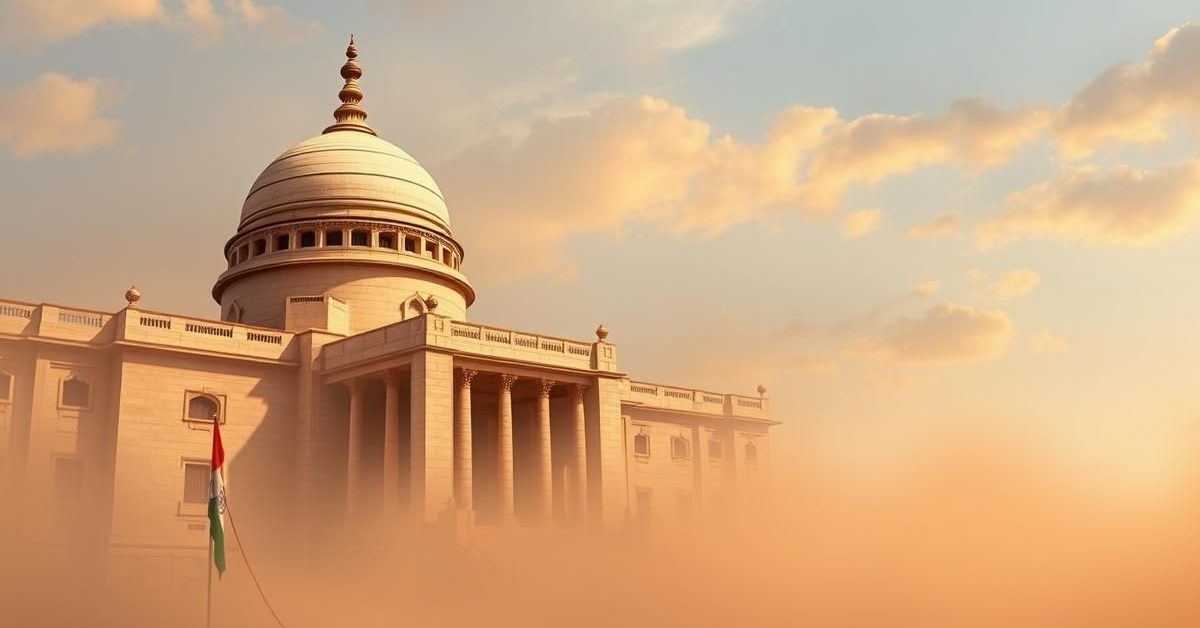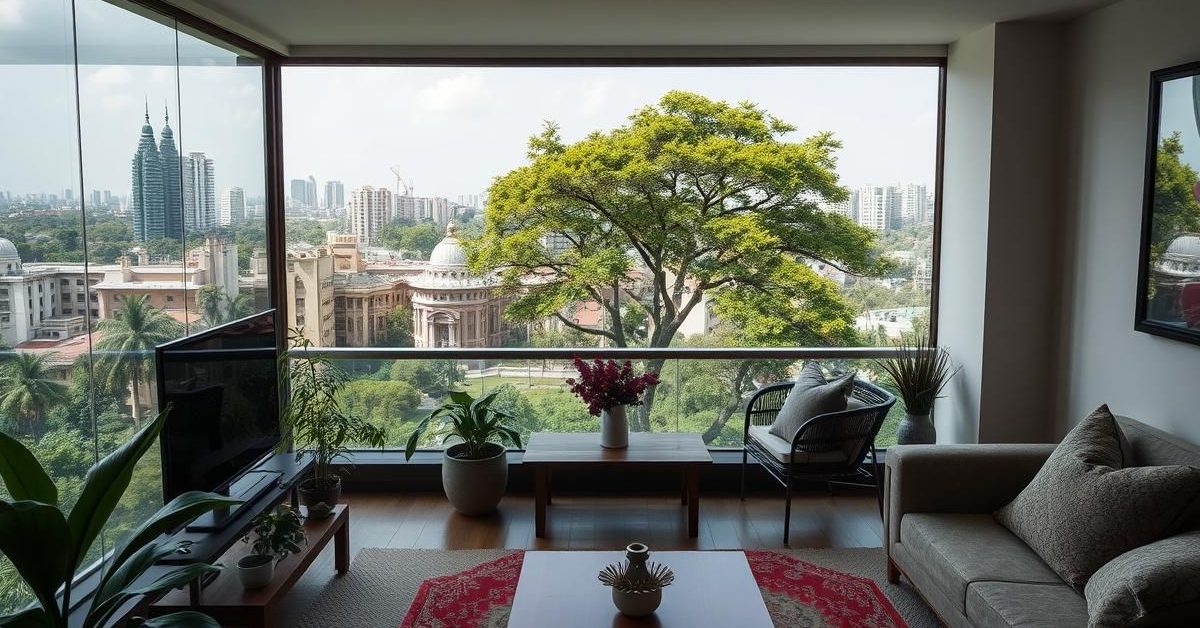India’s Constitutional Canvas: Exploring Pivotal Amendments and Governance Insights
The intricate fabric of India’s Constitution is a living document, constantly evolving through amendments, judicial interpretations, and the shifting tides of governance. Understanding its core tenets, the dramatic shifts it has undergone, and the mechanisms that uphold its democratic spirit is crucial for anyone keen on deciphering the nation’s political landscape. Let’s delve into some fundamental aspects of Indian Polity, from transformative amendments to key legal precedents that shape our republic.
The 42nd Amendment: A Constitutional Earthquake
Often dubbed the “Mini-Constitution,” the Constitution (Forty-second Amendment) Act of 1976 stands as one of the most sweeping overhauls in India’s constitutional history. Enacted during the tumultuous period of the Emergency under Prime Minister Indira Gandhi, it introduced a plethora of significant changes, fundamentally altering several provisions.
Among its most impactful modifications was the profound alteration to the Preamble. It was this amendment that famously infused the words “socialist” and “secular” into the Preamble, alongside changing “unity of the Nation” to “unity and integrity of the Nation.” These additions aimed to explicitly define the ideological direction of the Indian state.
Beyond the Preamble, the 42nd Amendment also touched the Seventh Schedule, reallocating subjects between the Union and State lists. It amended Article 105, dealing with the powers and privileges of Members of Parliament. Furthermore, it introduced new provisions such as Article 31D, which dealt with laws relating to anti-national activities, and added Directive Principles like Article 39A (free legal aid) and Article 43A (worker participation in management). While the subsequent 44th Amendment in 1978, under the Janata Party government led by Prime Minister Morarji Desai, reversed many of its controversial provisions, the changes to the Preamble were deliberately left untouched, becoming a permanent fixture.
Secularism: A Bedrock Principle Guarded by Article 15
India’s commitment to secularism, a principle deeply embedded in its democratic ethos, is unequivocally reinforced by various constitutional provisions. At its heart lies Article 15, a powerful safeguard explicitly prohibiting discrimination against any citizen. This vital article forbids the state from discriminating purely on grounds of religion, race, caste, sex, or place of birth. It’s crucial to note that “nationality” is not among the explicit grounds listed under Article 15’s direct prohibition, though other constitutional rights ensure equality for all citizens.
This commitment extends beyond Article 15. The broader right to equality, enshrined in Article 14, and the guarantee of equality of opportunity in public employment through Article 16, further buttress the secular character of the Indian state. The Supreme Court of India has consistently affirmed secularism as a fundamental aspect of the Constitution’s basic structure, an unalterable core. Landmark judgments like the 1973 Kesavananda Bharati decision and the 1994 S.R. Bommai decision, which addressed Centre-State relations, have repeatedly underscored this viewpoint, ensuring that even without the explicit words in the original Preamble, secularism remained an inherent, non-negotiable facet of India’s constitutional identity.
Unraveling the Emergency’s Shadow: The Shah Commission
The period of the Emergency (1975-1977) remains a contentious chapter in Indian history, marked by widespread allegations of power misuse and human rights infringements. To investigate these alleged excesses, the newly elected Janata Party government in May 1977 established the Shah Commission of Inquiry.
Headed by former Chief Justice of India, J.C. Shah, the commission was tasked with scrutinizing abuses of government authority, specifically focusing on matters such as preventive detentions, press censorship, and the controversial sterilization campaign. Its findings, detailed in three reports submitted in 1978-1979, exposed severe irregularities and held various politicians and bureaucrats, particularly those associated with Prime Minister Indira Gandhi’s son, Sanjay Gandhi, accountable for their actions during that period. The Shah Commission’s work was a significant step towards restoring transparency and accountability in India’s democratic system post-Emergency.
The Preamble’s Enduring Interpretations: From Berubari to Basic Structure
The Preamble to the Indian Constitution is more than just an introductory statement; it’s a profound vision document. The Supreme Court, in its pivotal 1961 ruling in In Re: The Berubari Union case, famously characterized the Preamble as “a key to open the mind of the makers” of the Constitution, emphasizing its interpretive significance.
Initially, the Preamble articulated India’s resolve to constitute itself into a “Sovereign Democratic Republic,” ensuring “Justice,” “Equality,” “Liberty,” and “Fraternity” to all its citizens. The 42nd Amendment of 1976, as discussed, expanded this to a “Sovereign Socialist Secular Democratic Republic,” also adding “integrity” to the description of fraternity.
Despite these changes and its profound symbolic value, the Supreme Court, even in the Berubari Union case, noted that the Preamble was “not a part of the Constitution, and it has never been regarded as the source of any substantive power.” However, this understanding evolved dramatically with the Kesavananda Bharati judgment of 1973, which declared that while Parliament could amend the Constitution, it could not alter its “Basic Structure,” a concept that the Preamble’s ideals implicitly define. Thus, while not a source of power, the Preamble became an integral part of the unalterable constitutional framework.
Indira Gandhi’s Economic Reforms: Nationalization and Privy Purses
The era of Indira Gandhi’s premiership was marked by significant shifts in India’s economic policy, often characterized as a decisive “leftward turn.” This ideological leaning was famously encapsulated in her “Garibi Hatao” (End Poverty) campaign slogan during the 1971 Lok Sabha elections.
Two landmark decisions underscored this shift: the nationalization of 14 major commercial banks in 1969 and the abolition of privy purses in 1971. The bank nationalization aimed to align the financial sector with developmental goals, extending credit to priority sectors and fostering inclusive growth. The abolition of privy purses, which were annual payments made to the erstwhile princely rulers of India, was a move rooted in egalitarian principles, seeking to dismantle a relic of the colonial past and redistribute wealth more equitably. These actions were central to her vision of a more socialist India.
The President’s Address to Parliament: A Constitutional Ritual
The Constitution of India mandates specific instances when the President addresses the Parliament, a crucial parliamentary ritual that sets the legislative agenda and outlines the government’s vision. Article 86(1) empowers the President to address either or both Houses of Parliament assembled together.
More specifically, Article 87(1) makes it obligatory for the President to address both Houses at the commencement of the first session after each general election to the Lok Sabha, and at the start of the first session each year. This address informs Parliament of the reasons for its summons and outlines the government’s policies, programs, and legislative proposals.
Following the President’s address, the Houses engage in a detailed discussion on a “Motion of Thanks,” typically moved by a Member and seconded by another. The scope of this discussion is exceptionally wide, allowing Members to scrutinize the functioning of the entire administration. However, it is imperative to note certain limitations: Members should refrain from discussing matters that do not fall under the direct responsibility of the Government of India. Furthermore, the President’s name should not be invoked during the debate, as the government, not the President personally, bears responsibility for the contents of the address.
Addressing Historical Disparity: The Kalelkar Commission and OBCs
The question of caste and its socio-economic implications has been a persistent challenge for independent India. Following the 1951 Census, demands for affirmative action and reservations for “Other Backward Classes” (OBCs) gained momentum. In response, the government established a significant commission in January 1953: the Kalelkar Commission.
Headed by Dattatreya Balkrishna Kalelkar, a respected Rajya Sabha MP, social reformer, and journalist, popularly known as Kaka Kalelkar, the commission was specifically tasked with examining the conditions of OBCs and recommending measures for their upliftment. At its formal inauguration on March 18, 1953, both President Rajendra Prasad and Prime Minister Jawaharlal Nehru expressed hopes that the commission’s efforts would pave the way for a more “classless” society in India. Nehru, notably, held reservations about labeling any section as “backward,” emphasizing that poverty was a widespread issue across the nation. While other commissions like the Nanavati Commission (investigating the 2002 Gujarat riots) or the Kelkar Committee (on taxation reform) served different purposes, the Kalelkar Commission remains a landmark in the history of caste-based policy in India.
Ordinances: Emergency Power and Judicial Restraint
The power of the President (and Governors at the state level) to promulgate Ordinances is a unique feature of India’s parliamentary system, enshrined in Article 123 of the Constitution. This power allows the executive to enact laws when Parliament is not in session, provided that “circumstances exist which render it necessary for him to take immediate action.” An Ordinance carries the same force and effect as an Act of Parliament.
However, this is an emergency power, not a substitute for legislative deliberation. The government is constitutionally required to present an Ordinance before Parliament for ratification once it reassembles. Failure to do so leads to its lapse within six weeks of Parliament’s reassembly.
The practice of repeatedly re-promulgating ordinances, keeping them alive without parliamentary approval, has been a subject of significant judicial scrutiny. The Supreme Court has unequivocally condemned this practice. In the landmark 1986 case of D.C. Wadhwa & Ors. vs. State of Bihar & Ors., the Court, led by then CJI P.N. Bhagwati, strongly criticized the Bihar government for re-promulgating 69 ordinances multiple times, deeming it a “fraud on constitutional power.” This principle was reiterated and strengthened by a seven-judge bench of the Supreme Court in the 2017 case of Krishna Kumar Singh and Another v. State of Bihar, which included current Chief Justice of India D.Y. Chandrachud. The court clarified that while circumstances might occasionally permit re-promulgation, a repeated practice without legislative oversight fundamentally usurps the legislature’s function and is therefore unconstitutional. The President acts on the advice of the Council of Ministers and, while she can return a recommendation once for reconsideration, she is bound to promulgate it if sent back, underscoring the executive’s role in this emergency legislative process, always subject to the scrutiny of Parliament and the judiciary.















